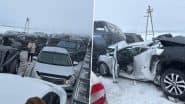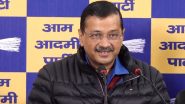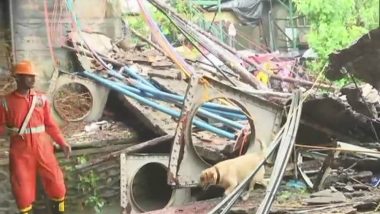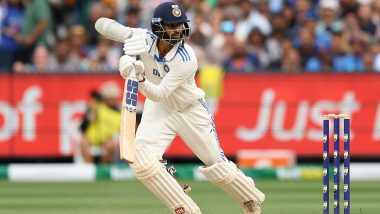Woke up to the news of Andheri bridge collapse in Mumbai due to the rains? Well, for most people in Mumbai, it is not even shocking. Poor infrastructure is a harsh reality Mumbaikars are living with. They are risking their lives every day, to the inadequacies of the Maximum City they have to face during monsoons. Waterlogging, flooding, potholes, disrupted local train services, bridges and other infrastructural collapse happen year after year during monsoons.
Apart from that, Mumbaikars also have to bear unexpected power cuts, fare hikes, disrupted flight and train services and heavy traffic jams. A city where it rains for 5-6 months, from late June to early November, don't you think should be better equipped for the monsoons? Unfortunately, that isn't the case. In the recent past, there have been several instances of infrastructural failure during monsoons which have caused major loss of life and property to the people of Mumbai.
We take a look at some of the most recent incidents of bridge collapses in Mumbai that made news for causing major havoc during monsoons -
2018
In the most recent incident, a part of a foot overbridge collapsed on the tracks of Andheri station on July 3, 2018. Identified as the Gokhale bridge, it has collapsed near platform number 8 and 9 of the station disrupting train services. As per reports, at least five people have been injured in the mishap.
2017
On September 29 the Elphinstone Road railway station bridge tragedy in Mumbai killed at least 22 people. Several others were severely injured when rumours of the bridge collapsing caused a stampede. A new foot overbridge was constructed by the Indian army and was opened for the public in February 2018. A report submitted by a five-member panel, led by the Western Railway chief security officer, in October 2017 stated that the stampede happened due to a sudden downpour of heavy rains and accumulation of commuters on foot overbridge and staircase.
Within a span of 15 days after the Elphinstone bridge tragedy, a foot overbridge at Mumbai's Charni road station collapsed on October 14, injuring a 67-year old man.
2016
On August 3, 2016, following the flooding of the river Savitri, in Mahabaleshwar, a bridge on the Mumbai-Goa highway collapsed and 20 people went missing, as per reports. The British-era bridge couldn't take the excessive rains, which led to its collapse.
2012
On September 4, 2012, a section of an under-construction metro rail bridge collapsed, killing one and wounding at least 11 people. The bridge was a part of the 12-km Versova-Andheri-Ghatkopar corridor of the Mumbai Metro.
Notably, the monsoons have just begun in Mumbai and a major accident has already happened. Though every year the important authorities like the railways, BMC and Mumbai police work day and night to reduce the discomfort caused to people, it is still not enough.
Also, citizens trying to help each other under these dire circumstances don't receive any support. For instance, Navi Mumbai resident named Nitin Nair helped a group of people, including an elderly man, stranded in rain in June 2018 by offering them a lift in his car. However, despite his noble intentions, he got penalised by the traffic cops under the Section 192 (a) and Section 66 (1) of the Motor Vehicle Act. According to the law, it is illegal to use a personal vehicle for transportation without permission. Given such a situation how many of us will actually be motivated to help another person in need?
The problems in the city seem endless with a mishap happening every year. The Indian army, for instance, re-built the Elphinstone bridge within five months of the mishap. But why does the civic body have to wait for a crisis to arise? Accidents are bound to happen, but their frequency in Mumbai is terrifying. It is evident that the city's infrastructure is too worn down to cope with the volume of its population, which is why they are prone to collapse.
The BMC should understand that prevention is better than cure to avert more disasters from happening. It should prioritise renovation work for all old infrastructure that could crumble during the monsoons. Traffic jams and waterlogging can be avoided during the rain if the authorities addressed problems like potholes before the monsoons start. The focus of the civic bodies should shift from post-damage control to preventing damages from happening altogether.
(The above story first appeared on LatestLY on Jul 03, 2018 01:38 PM IST. For more news and updates on politics, world, sports, entertainment and lifestyle, log on to our website latestly.com).













 Quickly
Quickly




















